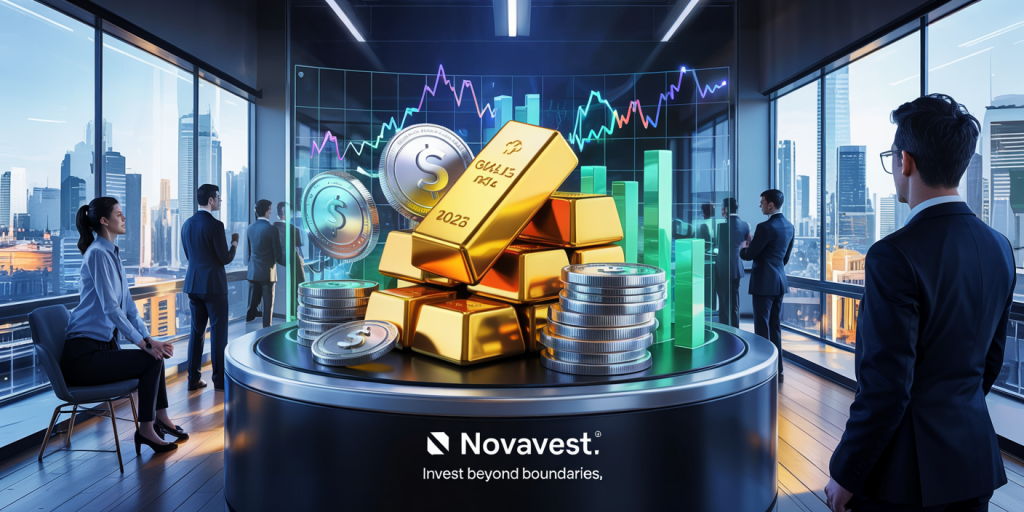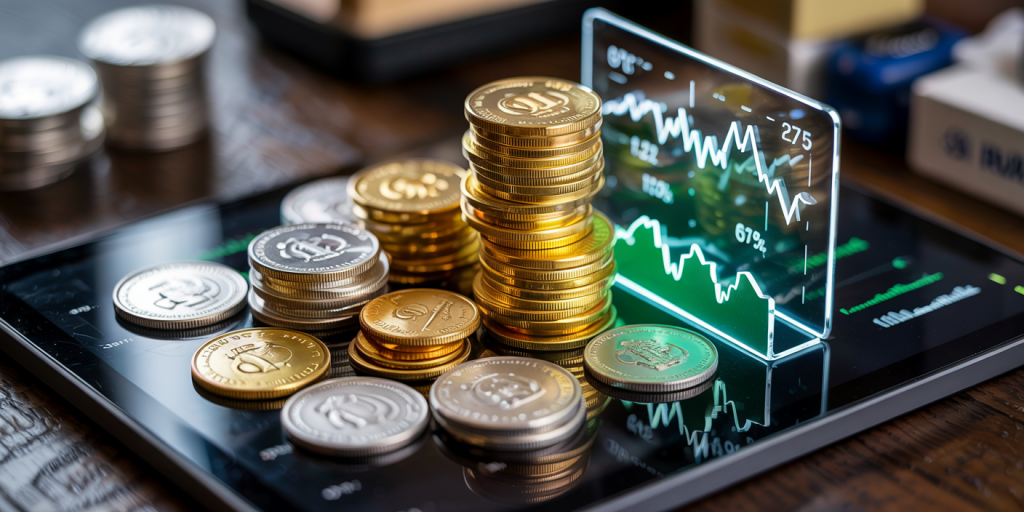Investing in Gold and Silver: Is It Still Worth It in 2025?
As we navigate the evolving financial landscape of 2025, investors are once again evaluating traditional safe-haven assets like gold and silver. These precious metals have historically served as a store of value during times of economic uncertainty, inflation, and geopolitical tensions. However, with rapid advancements in technology, changing monetary policies, and the growing emergence of digital currencies, the relevance and profitability of investing in gold and silver are being reconsidered. This article explores whether gold and silver remain attractive assets in 2025 by analyzing market trends, investment benefits, risks, and future outlooks.


The Historical Role of Gold and Silver in Investment Portfolios
Gold and silver have stood the test of time as valuable commodities. Dating back thousands of years, these metals have functioned not only as currency but also as metrics of wealth preservation. In the 1970s, for example, gold prices soared following the collapse of the Bretton Woods system, highlighting its role as a hedge against inflation and currency debasement. Similarly, silver has demonstrated unique characteristics as both an investment and industrial metal.
In recent decades, central banks worldwide have maintained substantial gold reserves, reinforcing the metal’s status as a reliable store of value. According to the World Gold Council, global gold holdings reached approximately 35,000 metric tons in 2024, reflecting steady demand mainly from institutional investors and emerging markets. Silver, albeit more volatile, has gained interest due to its dual role in investment and industrial applications, particularly in electronics and renewable energy sectors.
Current Market Dynamics in 2025: Pricing and Demand
As of early 2025, gold is trading near $2,000 per ounce, while silver is priced around $25 per ounce, marking some stabilization after the volatility seen in previous years. Factors influencing these prices include inflation concerns, interest rate fluctuations, geopolitical tensions, and shifts in currency valuations. For instance, the ongoing debates around U.S. Federal Reserve monetary policy and inflationary pressures in Europe continue to support gold’s appeal as a risk-averse asset.
Demand for silver has also been bolstered by its industrial importance. The surge in electric vehicle (EV) production and renewable energy infrastructure has increased the consumption of silver in components like photovoltaics and electric conductors. According to the Silver Institute, industrial demand accounted for nearly 50% of total silver consumption in 2024, a figure expected to rise as green technology investments accelerate.

| Metal | 2025 Price (USD/ounce) | 2024 Demand Split (%) | Primary Demand Drivers |
|---|---|---|---|
| Gold | 2,000 | 60% Investment, 40% Jewelry/Industry | Safe haven, central banks, jewelry |
| Silver | 25 | 50% Industrial, 35% Investment, 15% Jewelry | Industrial (electronics, renewables), investment |
Benefits of Investing in Gold and Silver in 2025
One of the primary incentives of investing in gold and silver remains portfolio diversification. Unlike stocks and bonds, precious metals tend to behave differently under varying economic conditions, mitigating systemic risks. For example, during the stock market sell-offs in 2022 and 2023, gold prices exhibited relative resilience, providing a hedging effect for investors.
Furthermore, gold and silver offer protection against inflation. With the inflation rate in the U.S. hovering around 3.5% in early 2025, investors seek assets that preserve purchasing power. Historically, gold has maintained real value effectively during high inflation periods. In practical terms, an individual who invested $10,000 in gold a decade ago enjoys a significantly higher nominal value today, compared to holding cash, which would have eroded due to inflation.
Additionally, the accessibility of precious metal investments has expanded. Apart from physical bullion and coins, investors can access gold and silver through Exchange Traded Funds (ETFs), futures, mining stocks, and digital gold platforms, making it easier to tailor exposure according to risk appetite and investment horizon.
Risks and Drawbacks to Consider for 2025 Investors
Despite their merits, gold and silver investments carry inherent risks. One notable drawback is price volatility. While gold historically has lower volatility compared to silver, both metals can experience significant short-term fluctuations based on macroeconomic news, speculative trading, or shifts in investor sentiment.
Another challenge is the opportunity cost. In a rising stock market or a booming economy, investments in precious metals may underperform growth assets. For example, the tech sector rallied strongly in 2023, while gold prices remained relatively flat, leading to lower returns for metal investors over that period.
Liquidity and storage issues also warrant attention. Physical gold and silver require secure storage and insurance, which may add to overall investment costs. While digital and paper assets alleviate this concern, they do introduce counterparty risk, emphasizing the need for proper due diligence when selecting investment vehicles.
Comparing Gold, Silver, and Alternative Investments
To gauge the attractiveness of gold and silver in 2025, it’s essential to contrast their performance and characteristics against other popular assets such as stocks, cryptocurrencies, and real estate.
| Investment Type | Volatility (5-year) | Average Annual Return (2019-2024) | Inflation Hedge | Liquidity | Storage/Management Costs |
|---|---|---|---|---|---|
| Gold | Moderate | 5-7% | Strong | High (via ETFs) | Moderate (storage for physical) |
| Silver | High | 8-10% | Moderate | Moderate | Moderate (storage) |
| U.S. Stocks (S&P 500) | High | 10-12% | Weak | High | Low |
| Bitcoin | Very High | 25-30% (highly variable) | Contested | High | Digital security costs |
| Real Estate | Moderate | 7-9% | Moderate | Low to Moderate | High (maintenance) |
This table illustrates that while gold and silver may not offer the highest returns, they provide critical diversification and inflation-hedging benefits. For example, during the inflation spikes of 2022, gold prices outpaced stock market returns, emphasizing its role as a defensive asset.
Real-world scenarios also underscore these differences. The 2020 stock market crash saw gold rising by approximately 25%, whereas the S&P 500 fell by over 30% before its recovery. Meanwhile, silver’s performance was mixed due to its industrial demand volatility.
Practical Examples of Portfolio Integration in 2025
Consider a balanced portfolio allocated with 10-15% in precious metals, combining both gold and silver. An investor with $100,000 might allocate $7,000 to gold ETFs and $8,000 in physical silver coins. This mix aims to hedge against inflation and economic shocks while maintaining growth potential through stocks and bonds.
A case study from 2023 highlights a family office that increased their gold holdings by 20% during inflationary concerns, reducing overall portfolio volatility by 5%. Similarly, an individual investor actively trading silver futures capitalized on price spikes related to renewed demand in EV manufacturing sectors.
These examples demonstrate tangible benefits in risk management, capital preservation, and opportunistic gains, reinforcing the metals’ ongoing relevance.
The Outlook for Gold and Silver in 2025 and Beyond
Looking ahead, gold and silver are poised to remain relevant, though their roles may shift. Increasing geopolitical uncertainty, monetary policy shifts, and potential market corrections suggest sustained demand for safe havens. Moreover, the accelerating transition to renewable energy and technological innovation boosts industrial demand for silver, potentially supporting price appreciation.
However, investors must monitor emerging risks such as the growing acceptance of cryptocurrencies as an alternative store of value, changing mining regulations, and environmental concerns impacting metal production. For instance, green mining initiatives could raise production costs, influencing supply dynamics.
Technological advancements in digital asset trading also enable more efficient exposure to precious metals, expanding participation but potentially introducing new market volatilities and regulatory challenges. Consequently, blending traditional and modern investment approaches can optimize returns.
As an investor, regularly reviewing portfolio allocation, staying informed on macroeconomic trends, and leveraging a diversified investment approach remain essential. Consulting with financial advisors experienced in commodities is advisable to tailor strategies in line with individual risk tolerance and goals.
—
In sum, investing in gold and silver in 2025 continues to offer valuable diversification, inflation protection, and exposure to industrial growth sectors. While not without risks, these metals maintain a unique position in investment portfolios, balancing safety with opportunity. Careful analysis, strategic allocation, and awareness of market dynamics will determine if gold and silver remain worthy components amid evolving financial paradigms.
